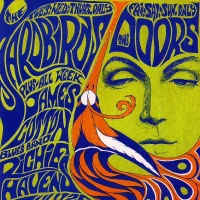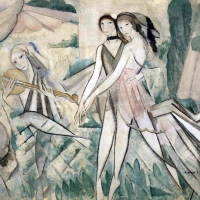 October
24
October
24
Tags
Houdini’s Ultimate Disappearing Act
On the 24th of October 1926, the legendary U.S. magician Harry Houdini (Hungarian-Jewish born Erik Weisz, 1874 – 1926) performed his last show at the Garrick Theatre in Detroit, Michigan. A week later he laid dead in a local hospital. The reasons for his passing away have been subject to numerous urban myths, yet the truth could not be more ordinary and gratuitous.
Houdini was the first superstar escapist known for stunts involving underwater straightjackets, beer barrels, chains, ropes, handcuffs, being buried alive, prison breaks, even escaping from the belly of a beached whale! Throughout his life, he had constantly invited his audiences to find him insurmountable challenges and so, unsurprisingly, his death mystified the public. In Houdini!!!: The Career of Ehrich Weiss (1997), Kenneth Silverman points out the misconception that Houdini died in the famed “Chinese Water Tank trick”, or shortly after being freed from the device. Houdini invented this stunt in which his feet were locked in stocks, he was suspended in mid-air from his ankles with a restraint brace and lowered into a glass tank full of water after which the restraint was locked to the top of the cell and he had to find a way to break out. The myth of his perishing in the water torture cell was promoted by a couple of Hollywood movies, one of which was the 1953 semi-biopic featuring Tony Curtis.
Another speculation was that, because he happened to pass away on the 31st of October, Halloween day, and he had spent most of his life debunking the occult aspirations of the spiritualists, mind readers, fortune tellers and other such charlatans, an organisation of this ilk might have poisoned him. The basis for this conspiracy theory was presumably that he threatened the livelihoods of the pro-spiritualists by unmasking the tricks of their craft. Houdini’s sceptisim actually caused the rift in his unlikely friendship with Sherlock Holmes’ creator and self-formed spiritualist Sir Arthur Conan Doyle. The latter was certain that Houdini possessed the ‘divine’ gift of dematerialisation, even though the magician consistently denied any such occult capabilities.
However, the best known assumption was that he died from the delayed effect of blows to his abdomen 8 days before his hospitalisation. They were delivered by the Canadian student J. G.Whitehead, a school boxing star, who was seen challenging Houdini after a show in his dressing room in the Princess Theatre in Montreal. Eyewitness students Price and Smilovitz told of how their mate had asked Houdini whether it was true that he could take any punch in the stomach, and after his permission, “delivered three strong blows below the belt”. Houdini was unprepared, as he was resting on a couch following a broken ankle a few days earlier and stopped him, in pain. (from Arthur Conan Doyle’s Edge of the Unknown, 1930)
Medical historians confirmed, however, that Houdini had already had appendicitis, prior to the punches. He kept performing that evening in Montreal and the next, in spite of mounting pain. His next show was in Detroit at the Garrick Theatre, so he had to suffer a 1000-mile train ride to get there, but tele-wired ahead to ask for a doctor to consult him once he was there. Upon seeing him, the doctor advised immediate surgery, but Houdini insisted on performing even though he had very high temperature; he collapsed when the curtain fell and was rushed to the nearby Grace Hospital, diagnosed with a ruptured appendix, suspected of peritonitis. After two failed operations, he lost the fight. The myth of the stomach punches prevails perhaps as Houdini’s life insurance company cited them as cause of accidental death and paid double indemnity, quite an unusual situation at the time. Houdini’s death shattered the illusions of immortality which his worshippers would have liked to attribute to the memory of their hero
.












Reblogged this on Crash Course.
LikeLike
Learn something new everyday. Thanks from this.
LikeLiked by 1 person
Reblogged this on Rogues & Vagabonds.
LikeLiked by 1 person
i have seen someone suffering from peritonitis, and it was very very painful. thankfully modern medicine saved her life.
LikeLiked by 1 person
death and taxes – inevitable
LikeLike
Reblogged this on History Undusted and commented:
A bit of a Whodunnit on Houdini. Enjoy!
LikeLike
Pingback: Houdini’s Ultimate Disappearing Act | A R T L▼R K | Rogues & Vagabonds
Pingback: Houdini – Thoughts From a Dark Island